After a long haul in college and then law school, my son finally purchased his very first house. Part of what attracted him to this house was the large wooded yard, including a rather large maple tree. Upon further examination, he discovered that the maple tree had three rather large cavities in it, which also happened to be infested with carpenter ants. Sawdust at the base of each cavity revealed that the ants were chewing away at the tree, making the cavities even larger. My son was very heartbroken at the thought of possibly having to remove the tree. He hoped that perhaps I could help him try to save it – at least long enough (possibly many, many years) for the other smaller trees on the property to be able to grow larger.
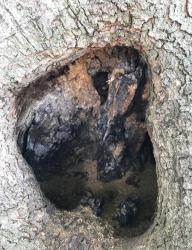
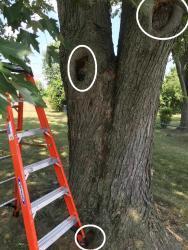
Our first concern was safety – what if the damaged branches fell during a storm? All the leaves and branches on the tree looked very healthy. And poking around inside the cavities revealed hard, undamaged wood. Except for the cavities (and the ants), the tree looked pretty strong, healthy and happy. And it was far enough from the house that he thought he could take the risk of attempting to save it.
The first step was to treat the carpenter ants. Most ant treatments do not treat carpenter ants – you need to check the label and find a treatment specifically for carpenter ants. It took two applications (and a couple of ant bites!) to get rid of the ants.
The next step was to fill the three cavities. Filling the cavities does not really cure the tree. Those holes will still be there, they will just be filled and sealed over. But once filled, the tree can use its stored energy and nutrients for actual growth of the tree, instead of constantly diverting it towards healing the cavity. Those particular branches could still be weaker than other branches on the tree - something to remember during storms and high winds. But, filling the cavity will help seal off additional internal decay, keep rain and moisture out, and also critters, ants, and other pests and pathogens – all of which should help keep the cavity from getting larger and extend, perhaps drastically, the life of the tree. Once that is accomplished, the tree will attempt to further heal itself, by allowing the cambium tissue to grow over, forming a healing collar around the edge of the cavity and then sealing closed the cavity entirely.
In the past, folks used material such as sand and cement to seal off a cavity. But these fillers are not expandable and not flexible enough for the tree to form new growth rings. Urethane expandable foam is a much better choice (such as Great Stuff spray foam). Not wanting to disturb the boundary wall inside the cavity and spread decay into the good clean wood, we did not clean out the cavities.



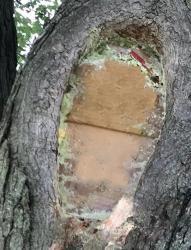
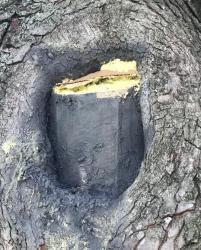

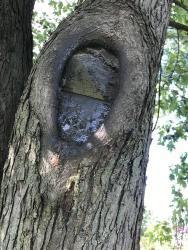
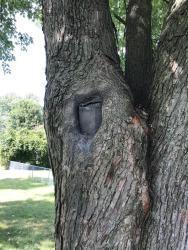
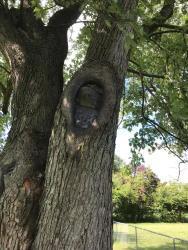
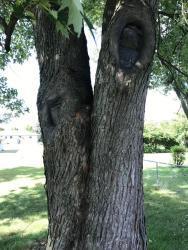
| Thread Title | Last Reply | Replies |
|---|---|---|
| Ants by antsinmypants | Apr 12, 2022 7:01 PM | 2 |
| I think you should get a tire swing and a treehouse. Good idea right? by PacificPonds | Feb 19, 2021 6:16 PM | 3 |
| The Maple tree ! by PeggyC | Jun 29, 2020 11:32 AM | 2 |
| Very informative and useful! by Altheabyanothername | Jun 25, 2020 8:49 PM | 0 |